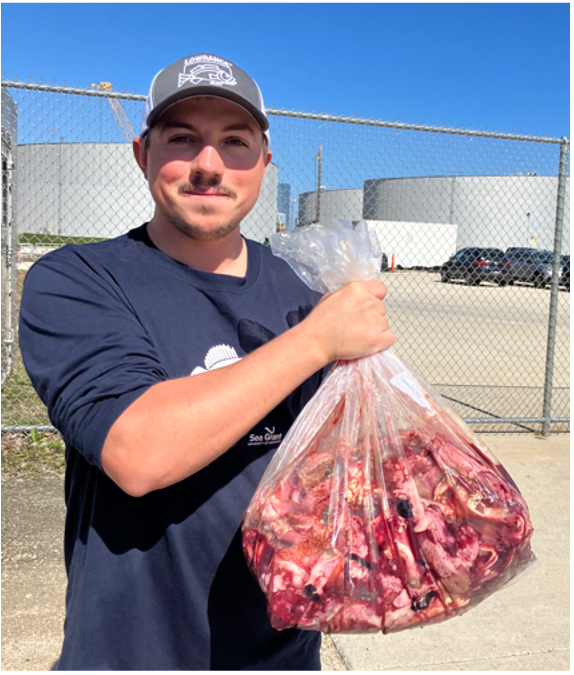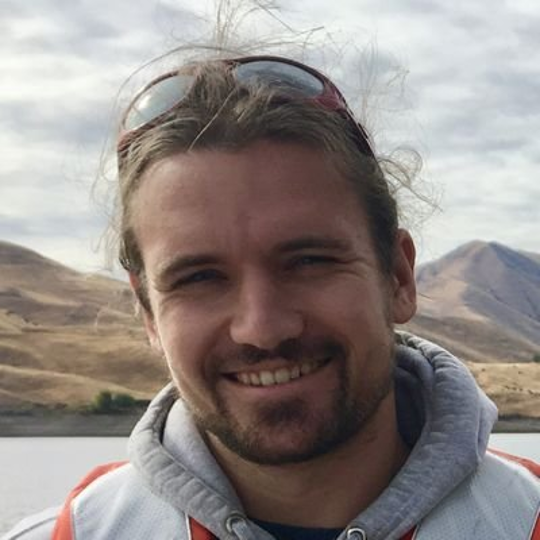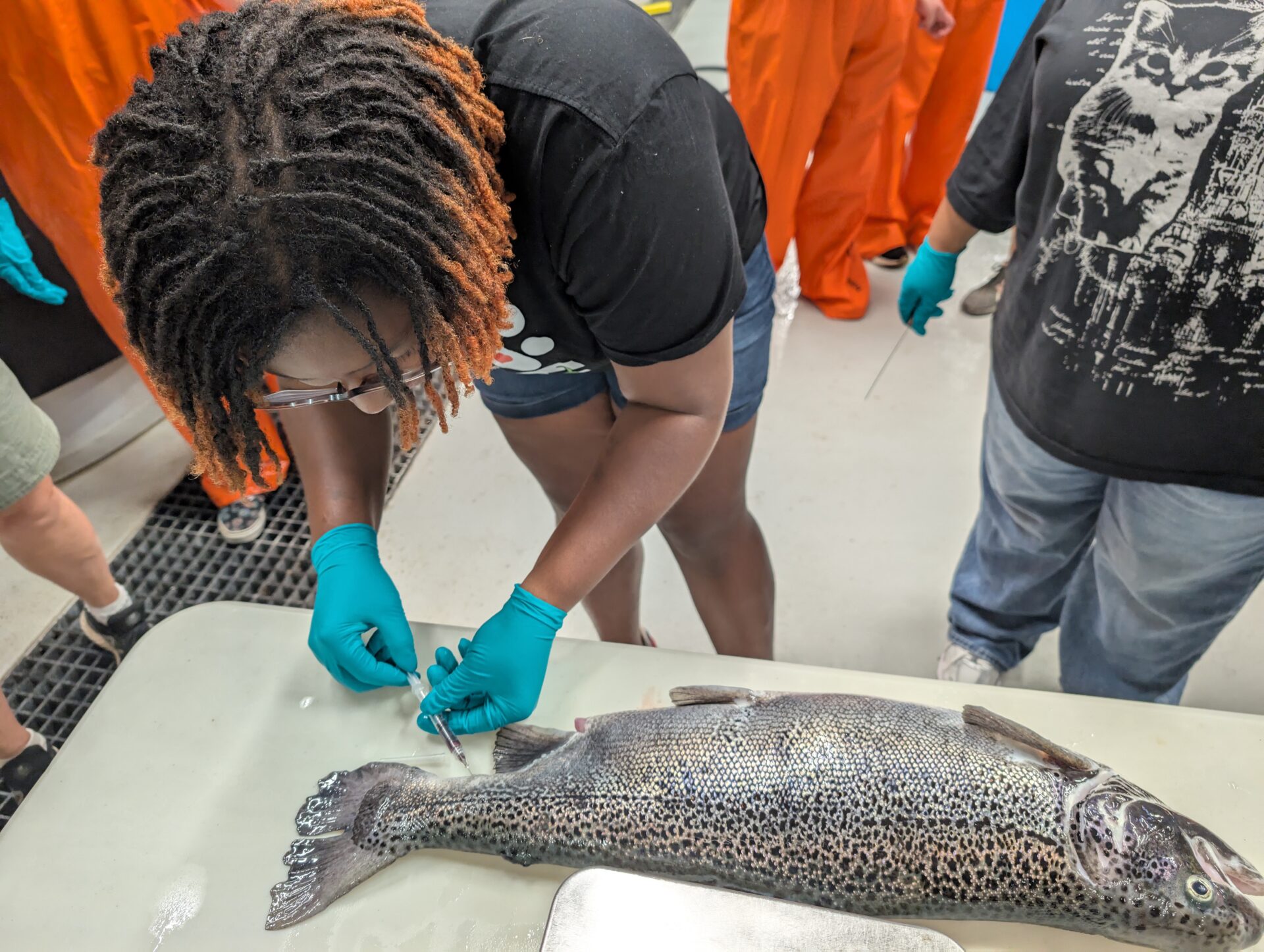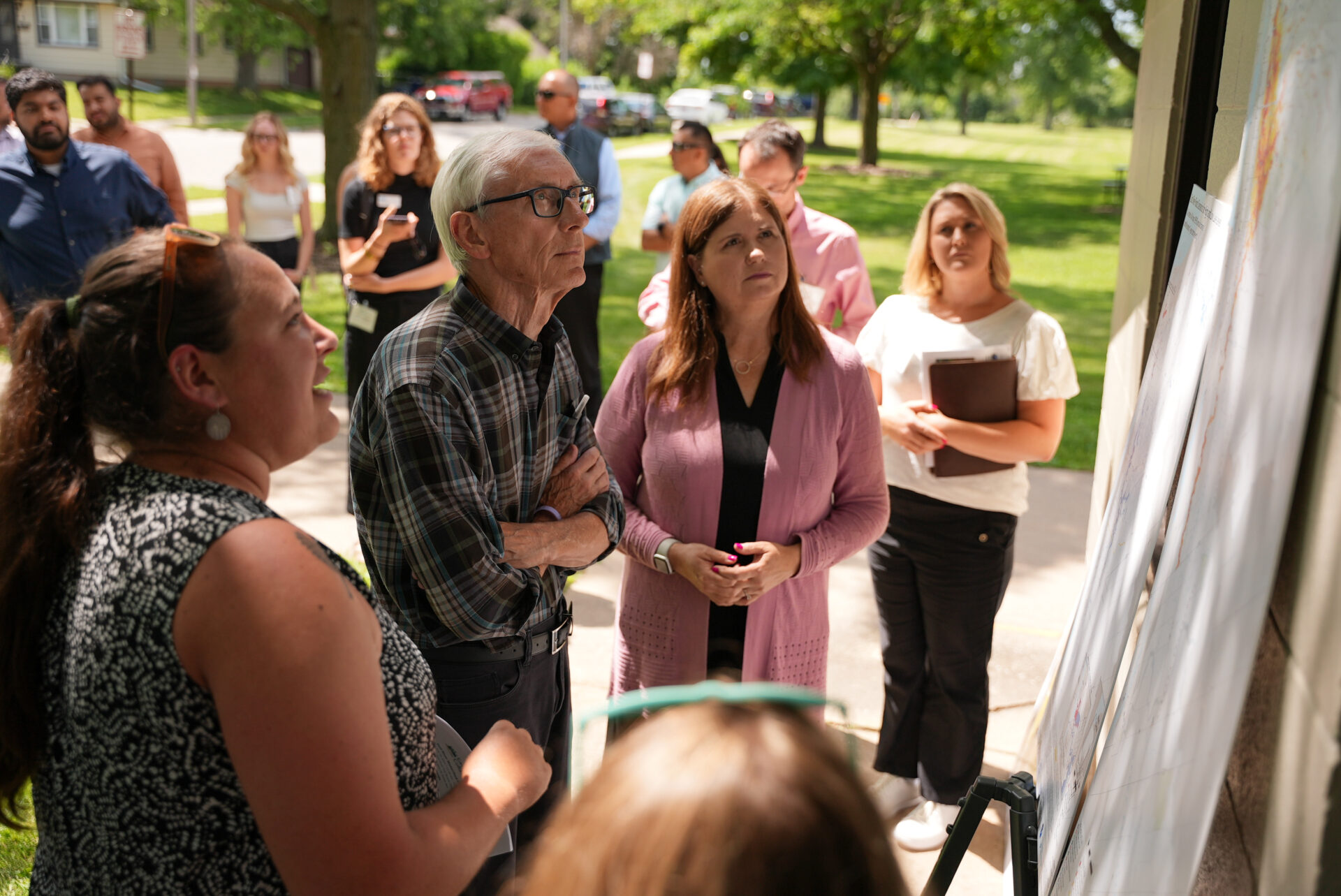
The Nature Conservancy’s Kari Hagenow (left) shows Gov. Tony Evers (middle) and Department of Administration Secretary Kathy Blumenfeld (right) a map of the East River watershed. Photo: Wisconsin Sea Grant
On a sunny Tuesday at Van Beaver Park in Green Bay, the East River Collaborative hosted Gov. Tony Evers on a walking tour that showcased four years of work building flood resilience along the East River.
Earlier this week, Evers announced $1.3 million in funding for Wisconsin’s Great Lakes communities through the Wisconsin Coastal Management Program. The East River Collaborative — collectively supported by Wisconsin Sea Grant, The Nature Conservancy, and NEW Water, the brand of the Green Bay Metropolitan Sewerage District — was one of 31 projects to receive grants. The Fund for Lake Michigan will also be providing financial support for the East River Collaborative’s project.
Julia Noordyk, water quality and coastal communities outreach specialist with Wisconsin Sea Grant, expressed gratitude for the program’s continued support of the collaborative. “They have really invested in the East River flood resiliency project since the beginning,” she said.
Spurred by historic flooding in March 2019, the East River Collaborative formed in 2020 to bring communities together to improve water quality and build resilience to floods.
The Nature Conservancy’s Kari Hagenow discussed this history while gesturing to flood maps on easels. Previous WCMP funding allowed the collaborative to create maps and models of the flooded area, conduct interviews and develop a framework for increasing flood resiliency in communities along the river.
“In terms of phosphorus and sediment, [the East River] is one of the highest loading tributaries to the bay of Green Bay, so we know that the work that we’re doing will not only benefit flood resilience, but it’s also going to benefit water quality in the bay of Green Bay and better fish and wildlife habitat in the system,” said Hagenow.
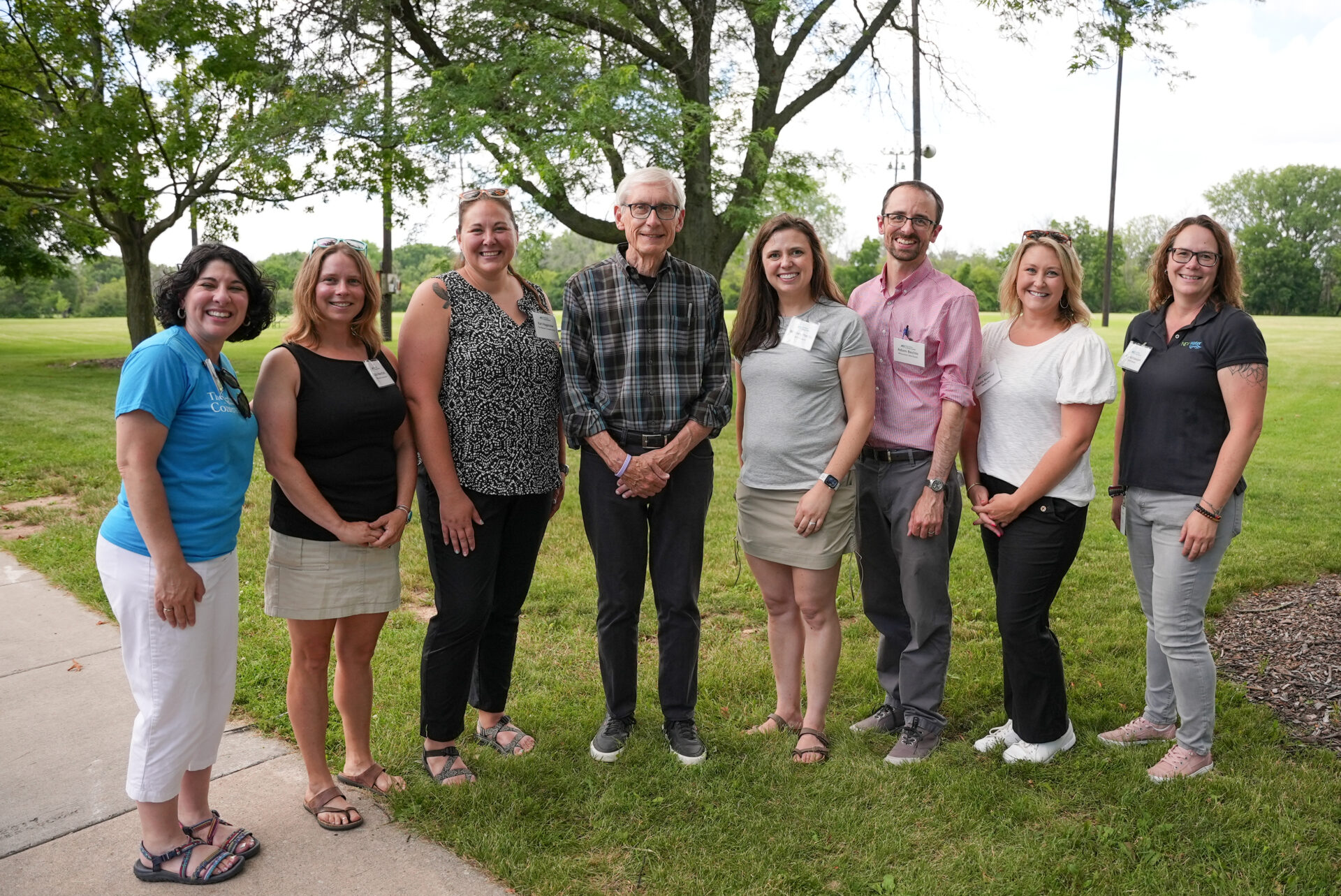
The East River Collaborative project team poses for a photo with Gov. Evers. From left to right: Nicole Van Helden, Julia Noordyk, Kari Hagenow, Gov. Tony Evers, Whitney Prestby, Adam Bechle, Natalie Bomstad, and Angela Kowalzek. Photo: Wisconsin Sea Grant
Gov. Evers and the tour group then crossed the park to get a better view of the river, which rolled peacefully as a great blue heron flew overhead.
The same park, however, was less serene in 2019 when nearby homes were evacuated and inundated with floodwaters. Noordyk discussed how the new grant will allow the collaborative to better engage with and elevate the concerns of residents hardest hit by flooding.
“We are really trying to expand our capacity to do more community engagement in underserved neighborhoods and try to get voices at the table, understand what’s going on and what people think,” said Noordyk.
The grant will fund a new partnership with the University of Wisconsin–Madison Division of Extension Natural Resources Institute and Wello, a local health equity nonprofit, to develop a survey and gather feedback from the community. The goal, Noordyk said, is to bring those perspectives to the table when municipalities start planning projects.
The tour also showcased the work that East River communities have already undertaken to soak up water and increase recreational opportunities. Brad Lange, village administrator of Allouez, discussed the development of a future “water trail” in the East River.
“The state doesn’t have many water trails, but we are looking at creating kayak-canoe launches,” said Lange. The goal would be for paddlers to traverse the river unobstructed from the town of Ledgeview to downtown Green Bay.
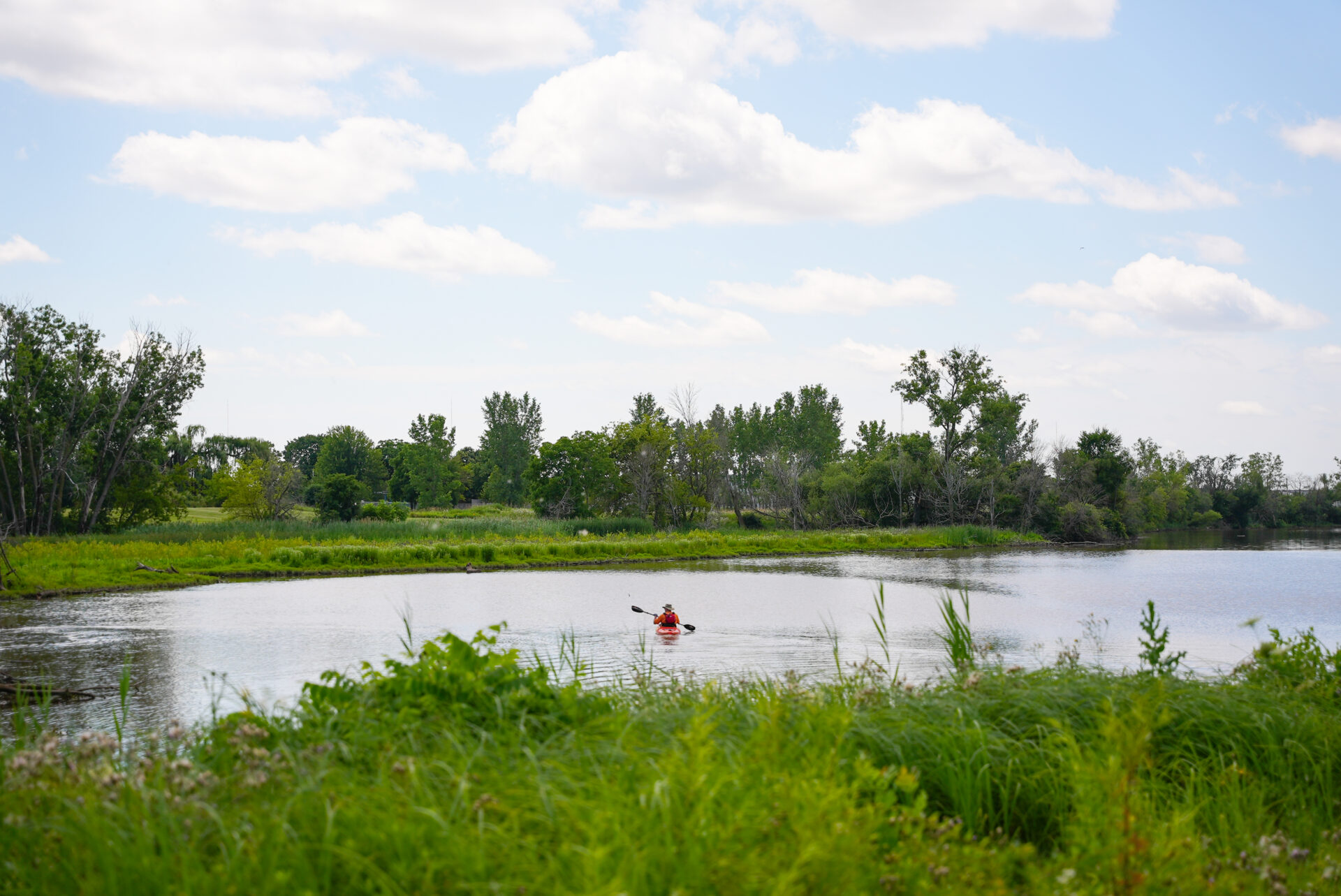
A kayaker paddles down the East River at the perfect moment. Photo: Wisconsin Sea Grant
Bellevue Village Administrator Ben Krumenauer also discussed the village’s improvements to the East River Trail, a 10-mile multi-use path along the river that experiences flooding throughout the year. The village will be repairing deteriorating boardwalks and repaving sections of the trail.
To the tour group’s delight, the value of recreation was on full display. While Krumenauer spoke, a kayaker appeared in the river behind him and paddled quietly downstream. It was a picture-perfect moment that someone jokingly questioned as orchestrated.
“We can’t pay [for] that perfection,” laughed Krumenauer.
In his final remarks, Governor Evers echoed the value of wetlands for soaking up water and supporting recreation. Not only will local communities benefit from these projects, he said, but also bikers, hunters, anglers and paddlers across the state.
“This is also going to offer opportunities for increased recreation,” said Evers, and “using the river in a good way.”



